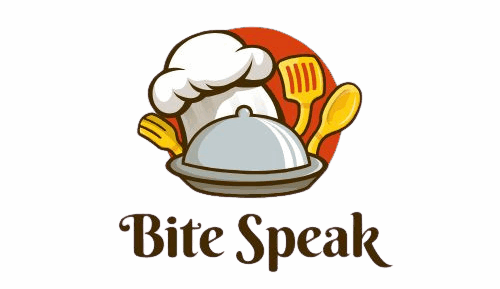Watch Out For These 18 Grocery Staples Full Of Additives
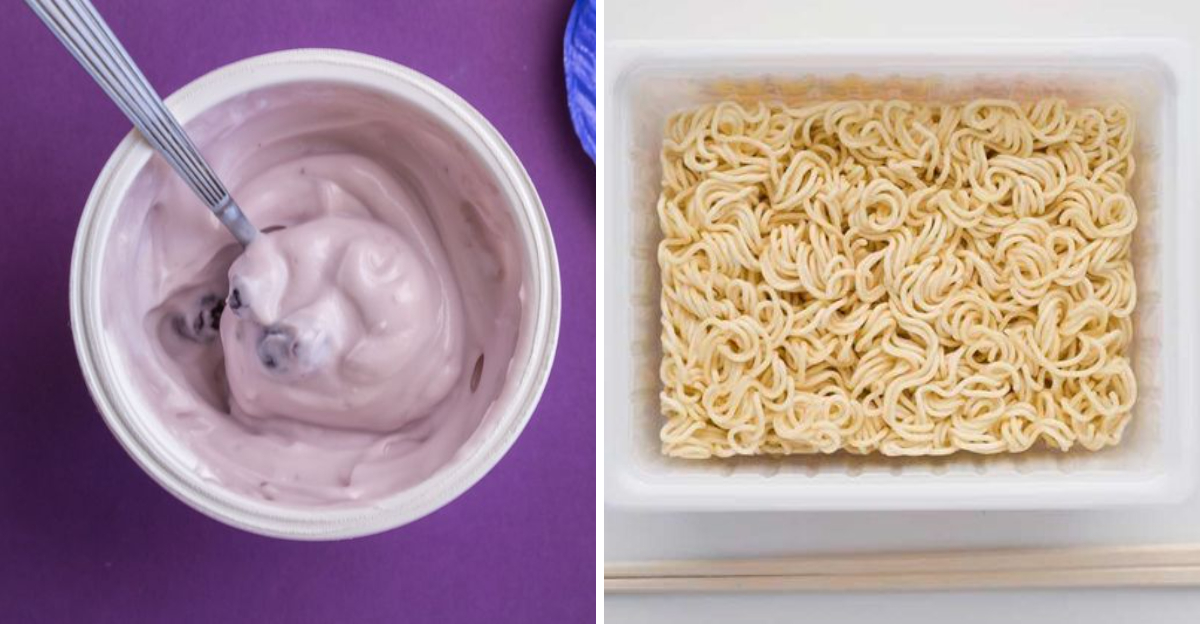
In today’s fast-paced world, convenience often comes at a hidden cost: additives in our everyday groceries. From added sugars to preservatives and artificial colors, these ingredients extend shelf life but may have health implications. This article highlights 18 common grocery items notorious for their additive content, encouraging informed choices for a healthier lifestyle.
1. Flavored Yogurts
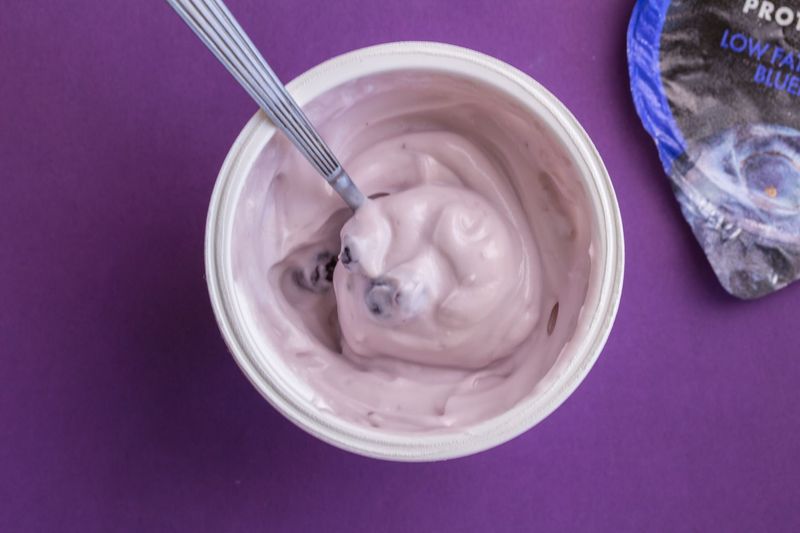
Flavored yogurts, like the popular strawberry-banana variety, often present a colorful and enticing option for breakfast or snacks. However, these seemingly healthy choices can hide a smorgasbord of additives. Artificial flavors mimic the taste of fresh fruit, while thickeners give that creamy texture. High fructose corn syrup sneaks in to amp up the sweetness, often eclipsing the natural sugars from fruit. It’s this sugary facade that masks its inner complexity.
Despite the promise of health benefits, such yogurts may not be as wholesome as they appear. Always check for natural ingredients on the label to ensure you’re making a nutritious choice.
2. Deli Meats
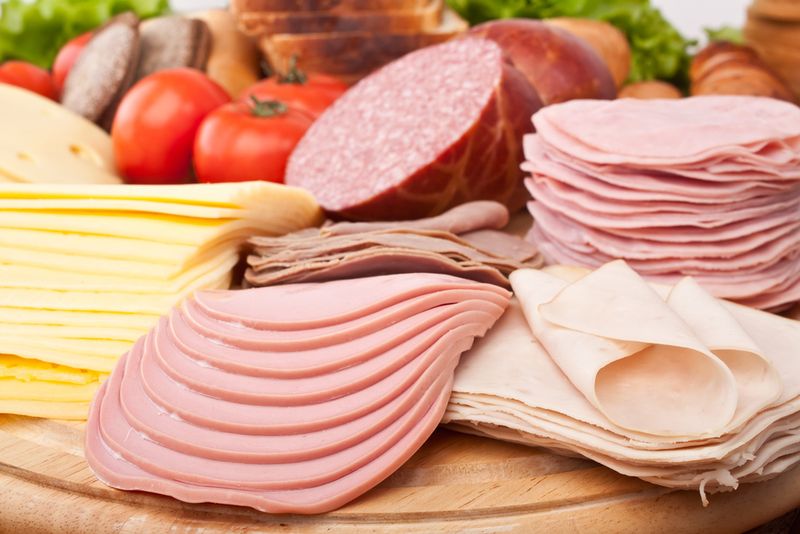
Deli meats, with their savory allure, are a staple in many households. Yet, beyond their appetizing appearance lies a cocktail of preservatives. Cold cuts like ham and turkey are often loaded with nitrates and nitrites, chemicals used to prolong shelf life and maintain that appealing pink hue. While these additives keep bacteria at bay, they bring their own health concerns.
Sodium phosphate, another common additive, enhances texture and moisture but contributes to high sodium levels. Next time you reach for a sandwich filler, consider freshly roasted meats as a healthier alternative.
3. Frozen Dinners

Frozen dinners promise convenience at the end of a long day, but the ingredient list reads more like a chemistry textbook. MSG, a flavor enhancer, often makes an appearance, alongside a hefty sodium count. Preservatives are generously added to ensure longevity, while artificial colors captivate our eyes and appetites.
Despite their tempting appearance and quick preparation time, these meals often sacrifice nutrition for ease. A wise choice would be to opt for homemade frozen meals, where you control the ingredients and flavors to suit your health and preferences.
4. Canned Soups
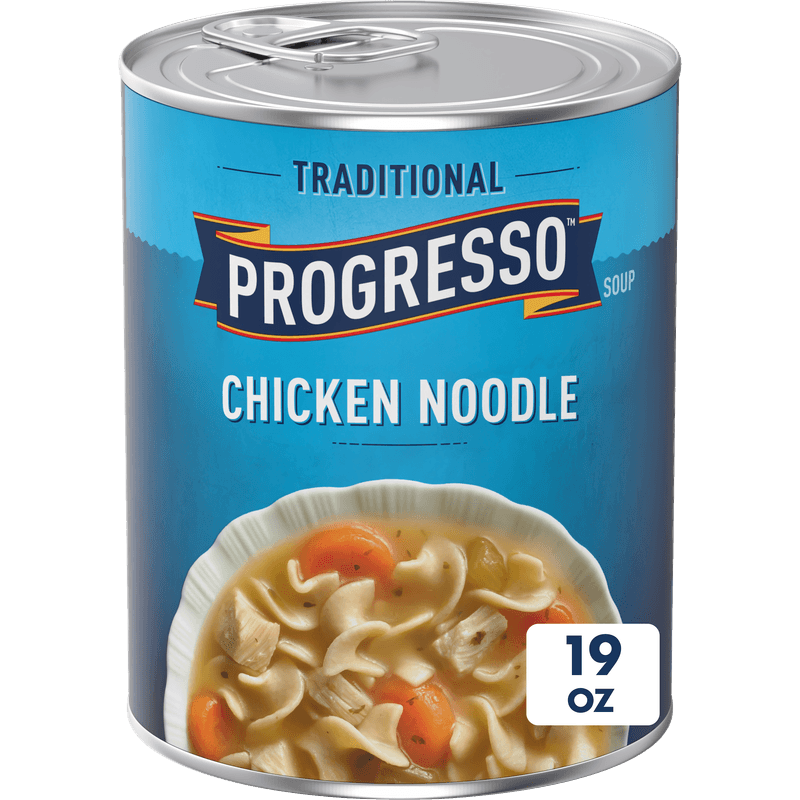
Canned soups, a pantry staple, offer warmth and comfort, particularly on chilly days. However, many mainstream brands pack their recipes with disodium inosinate and MSG, flavor enhancers that boost the savory experience. The sodium levels are often alarmingly high, raising health concerns.
Additionally, the cans themselves might be lined with BPA, a chemical with potential health implications. While convenient, it’s worth considering homemade soups, where fresh ingredients and spices create the flavor without unwanted additives.
5. Shelf-Stable Salad Dressings

Shelf-stable salad dressings, with their endless variety, add flavor to salads with ease. Yet, their longevity comes with a price: a list of emulsifiers, stabilizers, and artificial colors you can barely pronounce. These ingredients create that thick, rich consistency and vibrant appearance.
Though convenient, the trade-off is often a high dose of additives and calories. Crafting a simple vinaigrette at home can offer the same flavor with none of the chemical complexities, allowing you to enjoy your greens the way nature intended.
6. Instant Noodles
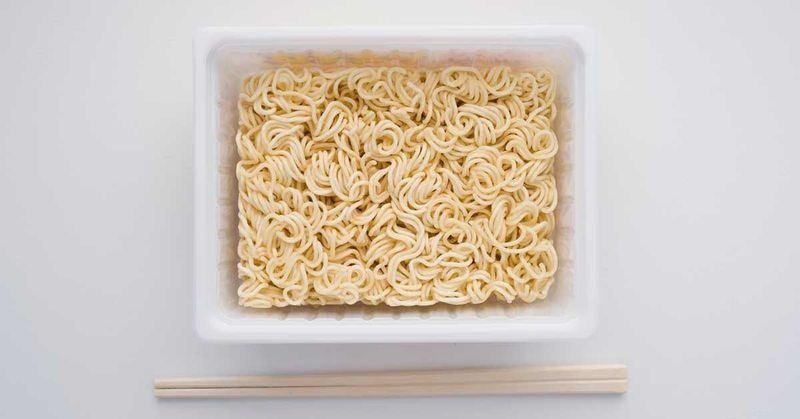
Instant noodles, beloved for their affordability and nostalgia, often come with a side of additives. Those convenient seasoning packets are packed with preservatives and artificial flavors that mimic the taste of complex broths. The noodles themselves often contain added sodium to enhance taste.
While they provide a quick meal, the nutritional compromise is significant. Consider adding fresh vegetables and a protein source to elevate the nutritional value, turning this quick fix into a more balanced meal.
7. Flavored Rice Mixes

Flavored rice mixes promise a quick, tasty side dish but often include a range of additives. Anti-caking agents ensure the grains don’t stick, while flavor enhancers amplify the taste beyond the simple grains. Yellow dyes offer visual appeal but raise health concerns.
Creating a homemade spice blend can provide the same delicious flavors without the additives. By choosing plain rice and adding your own herbs and spices, you gain control over both taste and nutritional content.
8. Non-Dairy Coffee Creamers
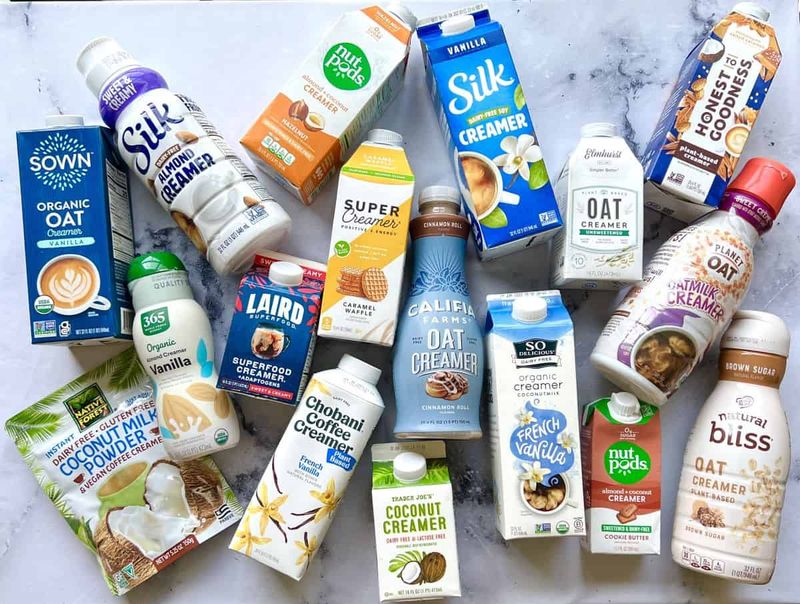
Non-dairy coffee creamers offer a convenient way to lighten your coffee without the lactose. However, these products often achieve their creamy texture through hydrogenated oils and artificial sweeteners, with a cocktail of shelf-stable preservatives ensuring longevity.
While they add a silky texture to your morning brew, the health trade-off can be significant. Consider using real milk or plant-based alternatives for a more natural approach, enjoying your coffee without the chemical aftertaste.
9. White Bread
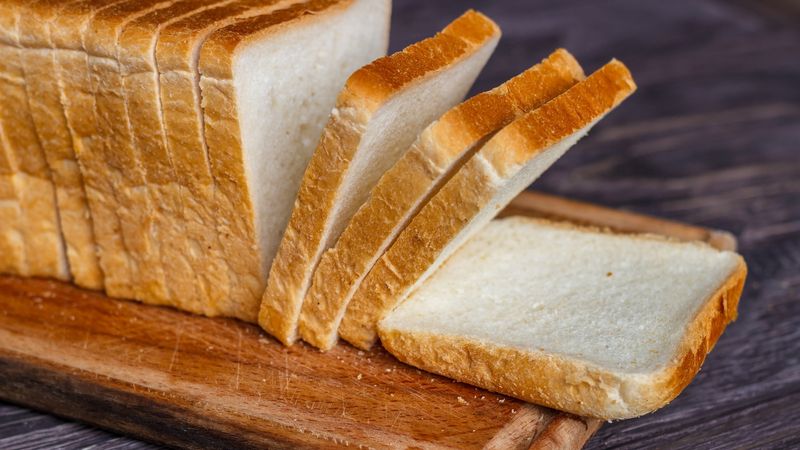
White bread, a classic kitchen staple, offers softness and versatility for sandwiches. Yet, mass-market varieties often rely on bleached flour and dough conditioners to maintain their cloud-like texture. Preservatives extend shelf life, allowing the bread to stay fresh longer.
While convenient, these ingredients strip away nutritional value. Opt for whole grain or artisan breads for a heartier and healthier choice, enriching your diet with fiber and nutrients absent in the refined versions.
10. Cheese Singles (Processed Cheese)
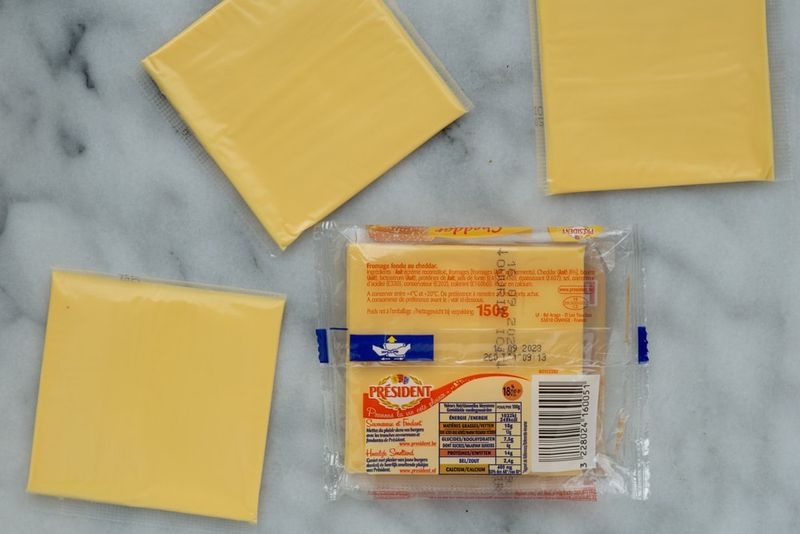
Cheese singles, renowned for their meltability, are a favorite in grilled sandwiches. However, their smooth texture and vibrant color often come from sodium citrate, emulsifiers, and artificial coloring. These ingredients help maintain consistency and flavor across each slice.
While convenient, these processed products can’t compete with the rich flavors and nutritional benefits of real cheese. Consider switching to natural cheese slices for a more authentic and healthier experience.
11. Cereal Bars and Granola Bars
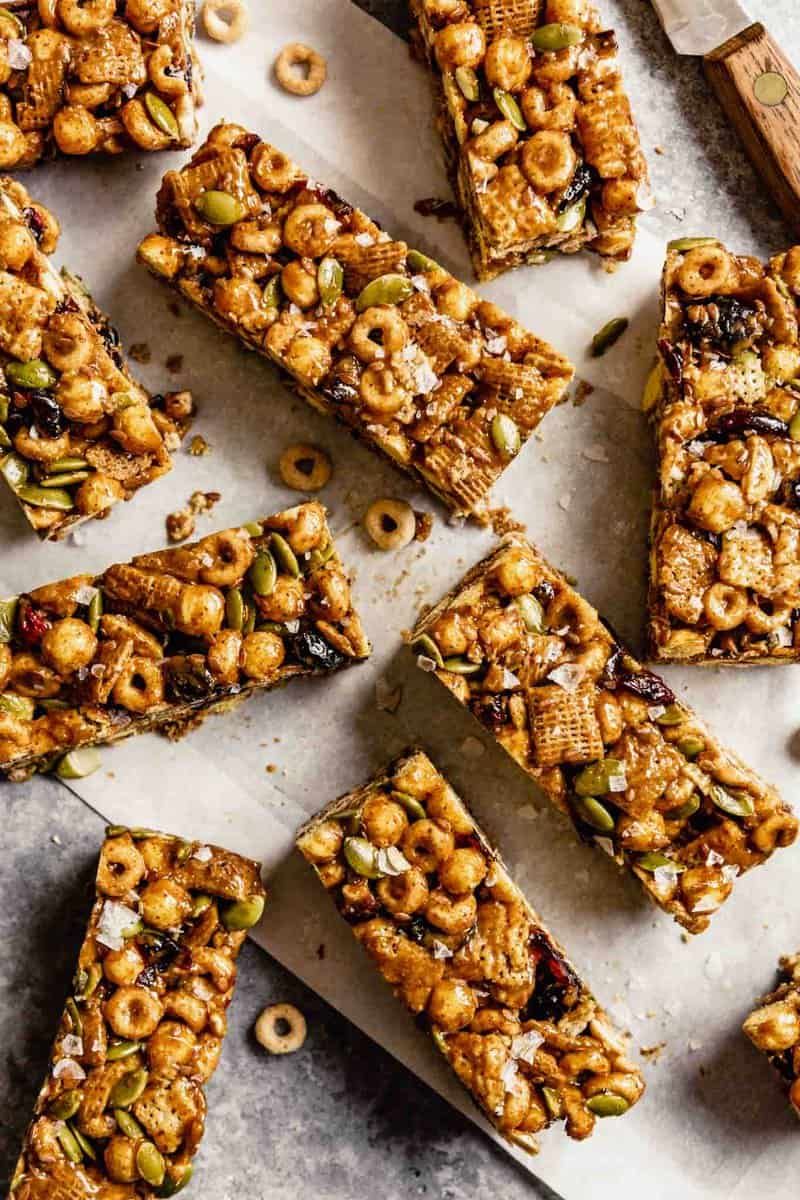
Cereal and granola bars, marketed as a healthy snack, often hide a myriad of additives. From corn syrup to synthetic vitamins, these bars stretch shelf life and flavor but at a nutritional cost. Even those labeled as “healthy” might be packed with BHT, a preservative of concern.
To make a smarter snack choice, consider homemade bars or those with a short, recognizable ingredient list. This ensures you’re fueling your body with wholesome ingredients, minus the extra additives.
12. Bottled Iced Tea
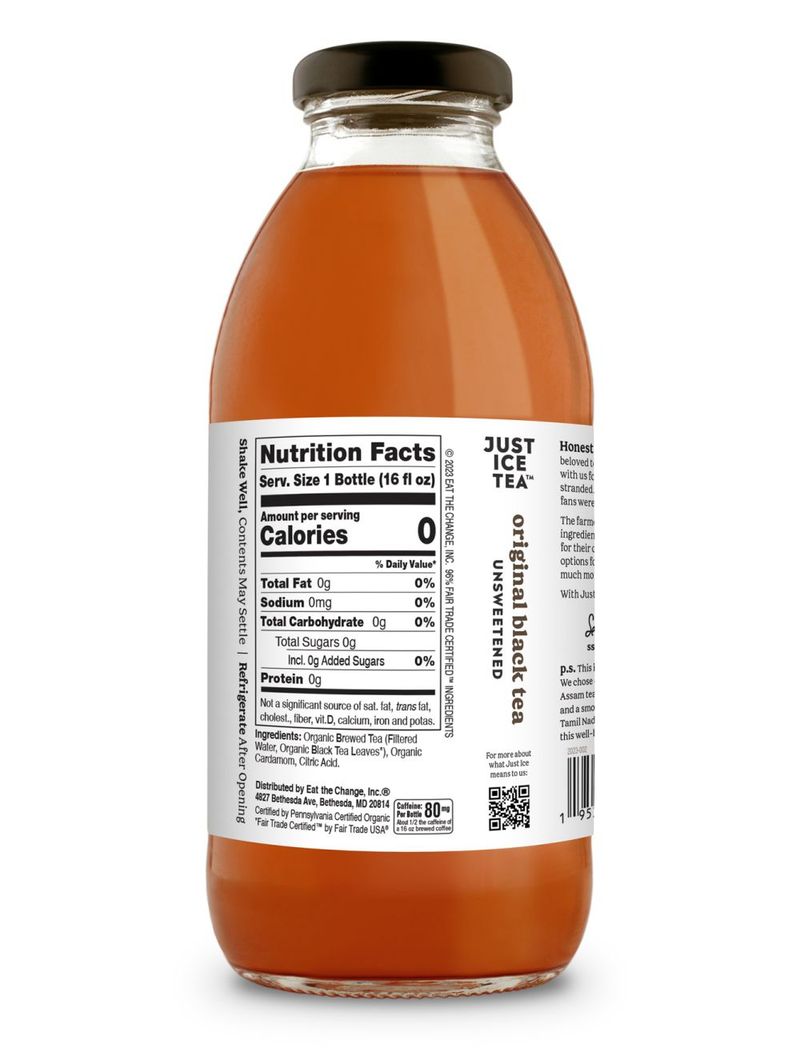
Bottled iced tea, often marketed as a “natural” beverage, can be loaded with not-so-natural ingredients. Preservatives like potassium sorbate extend shelf life, while artificial sweeteners enhance sweetness without calories.
For a refreshing and healthier alternative, brew your own iced tea at home, sweetening it with honey or fruit for a naturally delightful flavor. This simple change can enhance both taste and nutritional benefit without unwanted additives.
13. Microwave Popcorn

Microwave popcorn, a movie-night favorite, intrigues with its buttery aroma. However, the lining of the bag may contain PFOAs, chemicals linked to health concerns. The butter flavor, often synthetic, includes diacetyl, adding to the potential risks.
For a healthier experience, consider popping your own kernels on the stove, using real butter or oil for flavor. This allows you to enjoy the classic snack with a clean conscience and natural taste.
14. Pancake Syrup (Not Maple)

Pancake syrup, a breakfast staple, often masquerades as maple syrup but is primarily high fructose corn syrup. This concoction of artificial flavors and caramel coloring creates a similar taste and appearance to the real deal.
For an authentic and additive-free experience, opt for pure maple syrup. While it may be pricier, the rich flavor and natural ingredients are a worthy investment in taste and health.
15. Frozen Pizza

Frozen pizzas offer the allure of a quick, tasty meal, but the reality can be less appetizing. Toppings often contain preservatives, while the dough and sauce come with a mix of flavor boosters and additives.
To enjoy a pizza night with fewer additives, consider making your own pizza at home. Using fresh ingredients allows you to craft a meal tailored to your tastes, with none of the additives found in store-bought varieties.
16. Bottled Smoothies

Bottled smoothies, advertised as a health drink, sometimes contain more additives than fruit. Ascorbic acid and stabilizers maintain color and texture, while concentrates replace fresh ingredients.
For a truly nutritious drink, blend your own smoothies at home with fresh fruits and vegetables. This ensures you savor the real flavors and benefits without the hidden additives, making your beverage as healthy as it is refreshing.
17. Jarred Pasta Sauce
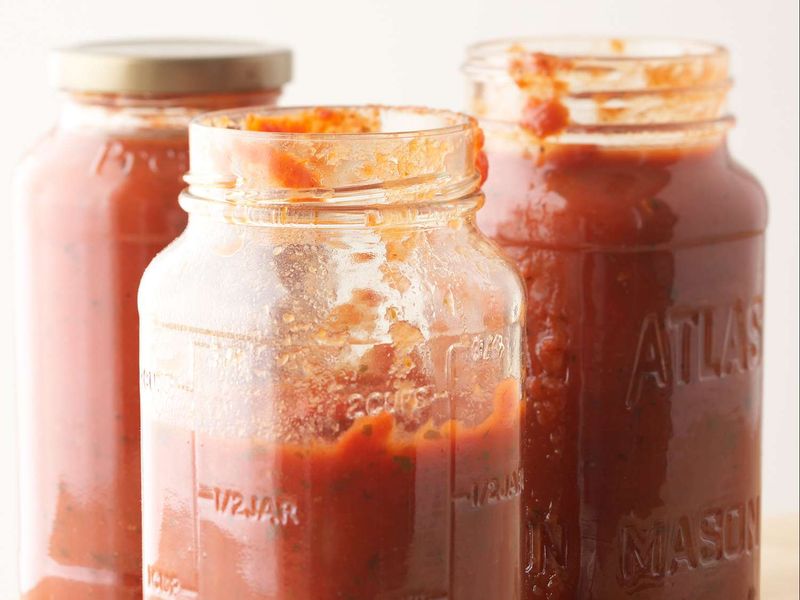
Jarred pasta sauce, a convenient kitchen ally, often contains added sugars and preservatives like citric acid for extended shelf life. While these ingredients enhance flavor and longevity, they can compromise nutrition.
For a purer pasta experience, consider making your own sauce with fresh tomatoes, herbs, and spices. This simple switch not only boosts flavor but also ensures you enjoy a meal free from unnecessary additives.
18. Boxed Mac & Cheese
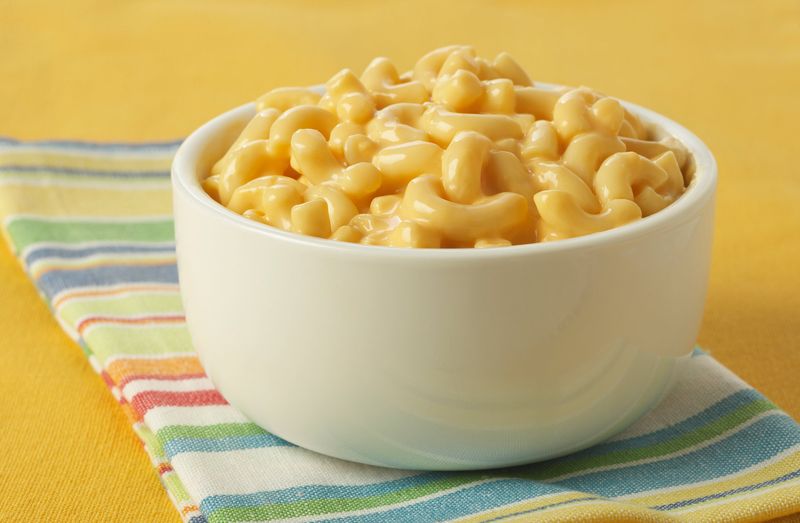
Boxed mac and cheese, a beloved comfort food, enthralls with its bright orange hue. However, those vivid packets often contain color additives like Yellow 5, along with sodium and flavor enhancers.
To indulge without the additives, try making mac and cheese from scratch using real cheese and pasta. This allows you to savor the creamy comfort you crave, without the chemical extras.
